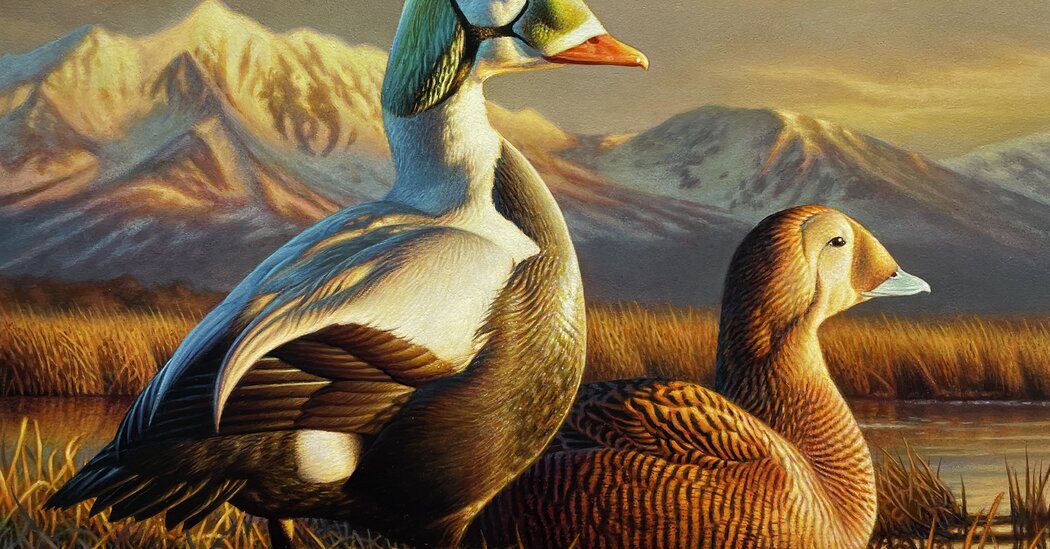At the Bruce Museum, an exhibition of duck stamp art tells a 90-year-old story about how paintings can contribute to land preservation.
This article is part of the Fine Arts & Exhibits special section on the art world stretching boundaries with new artists, new audiences and new technology.
You don’t have to be a conservationist or a hunter to marvel at the portraits at the Bruce Museum in Greenwich, Conn. Each one is of a duck. Some show ducks flying — mergansers, pintails, mallards and elders. Some show ducks swimming. One shows a dog with a duck in its mouth.
The portraits of the ducks (and that retriever) were drawn or painted for stamps. Not postage stamps, but federal duck stamps that hunters who want to shoot waterfowl are required to buy along with their state licenses.
The revenue goes toward buying acreage for wildlife habitats. The government spends almost all of the money from the duck stamps on land acquisition — $1.2 billion in the 90 years since the first duck stamps were sold. Only the cost of printing the stamps has been deducted.
The duck stamps have been “a source for some of the best wildlife art that’s ever been produced,” said Daniel Ksepka, who curated the exhibition. It is the first to bring together the original art behind the annual stamps, which since 1949 have been created from the winner of a duck painting contest. The recent originals are the same size — 10 inches wide and 7 inches high — because the contest has size requirements.
Many of the duck stamps on display in the exhibition “Conservation Through the Arts: Celebrating the Federal Duck Stamp,” which runs through Feb. 9, come from the Bruce’s own collection — and most of the Bruce’s duck stamps were donated by Richie Prager, who retired in 2019 from BlackRock, one of the world’s largest asset managers. He described himself as “a complete zealot on the subject” after beginning a conversation by saying “I hope you have time. You’re not going to get short answers.”
